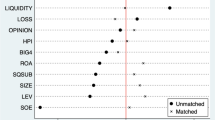Abstract
This paper develops a simple, incentive compatible, allocation mechanism by means of which both polluters and pollutees will reveal their preferences so that the government can determine the Pareto optimal pollution level. The mechanism involves a combination of the Pigou tax and the Clarke tax. The two taxes are complementary and together provide a practical solution to the environment problem. The mechanism is applied to the problem of finding the optimal quality of river water which serves both as a waste disposal and as a source of drinking water.
Similar content being viewed by others
References
Clarke, E.H. (1971). Multipart pricing of public goods.Public Choice 11: 17–33.
Groves, T. and Ledyard, J.O. (1977). Optimal allocation of public goods: A solution to the free rider problem.Econometrica 45: 783–809.
Lindahl, E. (1919).Die Gerechtigkeit der Besteuerung. Lund.
Loeb, M. (1977). Alternative versions of the demand revealing process.Public Choice 39(special supplement): 15–26.
Pigou, A.C. (1920).The economics of welfare. 1st edition. London.
Samuelson, P. (1955). Diagrammatic exposition of a theory of public expenditure.Review of Economics and Statistics 37: 350–356.
Sinn, H.-W. and Schmoltzi, U. (1981). Eigentumsrechte, Kompensationsregeln und Marktmacht.Jahrbücher für Nationalökonomie und Statistik 196: 97–117.
Sinn, H.-W. (1988). Die Clarke-Steuer zur Lösung des Umweltproblems: Eine Erläuterung am Beispiel der Wasserwirtschaft. In H. Siebert (Ed.),Umweltschutz für Luft und Wasser, 241–254. Berlin, Heidelberg, and New York: Springer-Verlag.
Sinn, H.-W. (1986). Sufficient conditions for a vanishing Clarke tax — A note.Journal of Economics 46: 65–72.
Suchanek, G. (1979). Information, optimality and pollution control.Journal of Public Economics 12: 99–114.
Tideman, T.N. and Tullock, G. (1976). A new and superior process for making social choices.Journal of Political Economy 84: 1145–1159.
Tideman, T.N. and Tullock, G. (1977). Some limitations of demand-revealing processes: Comment.Public Choice 29: 125–128.
Author information
Authors and Affiliations
Additional information
This paper is dedicated to Edwin von Böventer on the occasion of his sixtieth birthday. It is part of the NBER's research program on taxation. Comments by Ronnie Schöb and an anonymous referee are gratefully acknowledged.
Rights and permissions
About this article
Cite this article
Sinn, HW. Pigou and Clarke join hands. Public Choice 75, 79–91 (1993). https://doi.org/10.1007/BF01053882
Accepted:
Issue Date:
DOI: https://doi.org/10.1007/BF01053882




